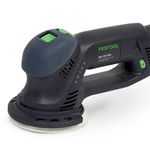Router template collars
Inexpensive indestructible and indispensable, these little guides add safety and control
Synopsis: Router guru Pat Warner says no router accessory adds more safety, indestructibility, ease of setup and usefulness at an absolutely cheap cost than template collar guides. Why not just buy bearing-guided bits? Collars are cheaper and more versatile, he says, and he explains why. They do have limitations, and he talks about how to overcome them. Included in the article are detailed demonstrations of routing grooves and dadoes, mortises and tenons, and sliding dovetails. He also discusses sizes and subbases for added stability.
It’s true that a router can sometimes be used freehand. But because it has a dangerously sharp bit spinning rapidly at the end of a powerful motor, a router is more safely used with accessories that help the operator gain control: router tables, edge guides, add-on bases, shopmade and commercial jigs, bits with shaft-mounted bearings or template collar guides. Each brings its own advantages in specific routing situations. But none of these router accessories adds more safety, indestructibility, ease of setup and usefulness at an absolutely cheap cost than template collar guides. I can’t imagine being without them.
A good set of seven collars often costs no more than $30. Yet, these little metal bushings that clip or screw into the subbase of virtually any router can simplify most cross-grain cuts— including sliding dovetails, mortises, tenons, dadoes, butthinge recesses and stair risers— and can be used for lettering, inlaying and even jointing short stock. The only other piece of equipment you really need in most cases is a scrap of medium-density fiberboard (MDF) or plywood used as a template to guide the collar, and thus the bit, through the cut. Collars come in different inner and outer diameters to accommodate a variety of bits and templates.
Collars are very easy to use
A collar screws or locks into the opening on the subbase of a router and extends below the subbase to ride against a template or jig. With the template clamped to the work or the work clamped to a jig, the collar rides along the template edge. The cut of the bit then mimics the template edge, whether straight or curved.
Router novices often make these cuts with the large router subbase riding against a jointed board or template. But router subbases are notoriously out of round, or nonconcentric. A collar guarantees a much truer cut. For example, many of the dovetail jigs on the market use collar guides to ensure uniform and tight-fitting dovetails.
One suggestion for using a collar: There is little reason that it needs to extend more than 5⁄16 in. below the router subbase, because most templates are less than 1⁄2 in. thick. The extension should always be shorter than the template. Collars often come in 5⁄8-in. or 3⁄4-in. lengths, so shorten them with a hacksaw to make them more functional.
From Fine Woodworking #139
For the full article, download the PDF below:
Fine Woodworking Recommended Products

Festool Rotex FEQ-Plus Random Orbital Sander

Stanley Powerlock 16-ft. tape measure

Ridgid EB4424 Oscillating Spindle/Belt Sander




















Log in or create an account to post a comment.
Sign up Log in